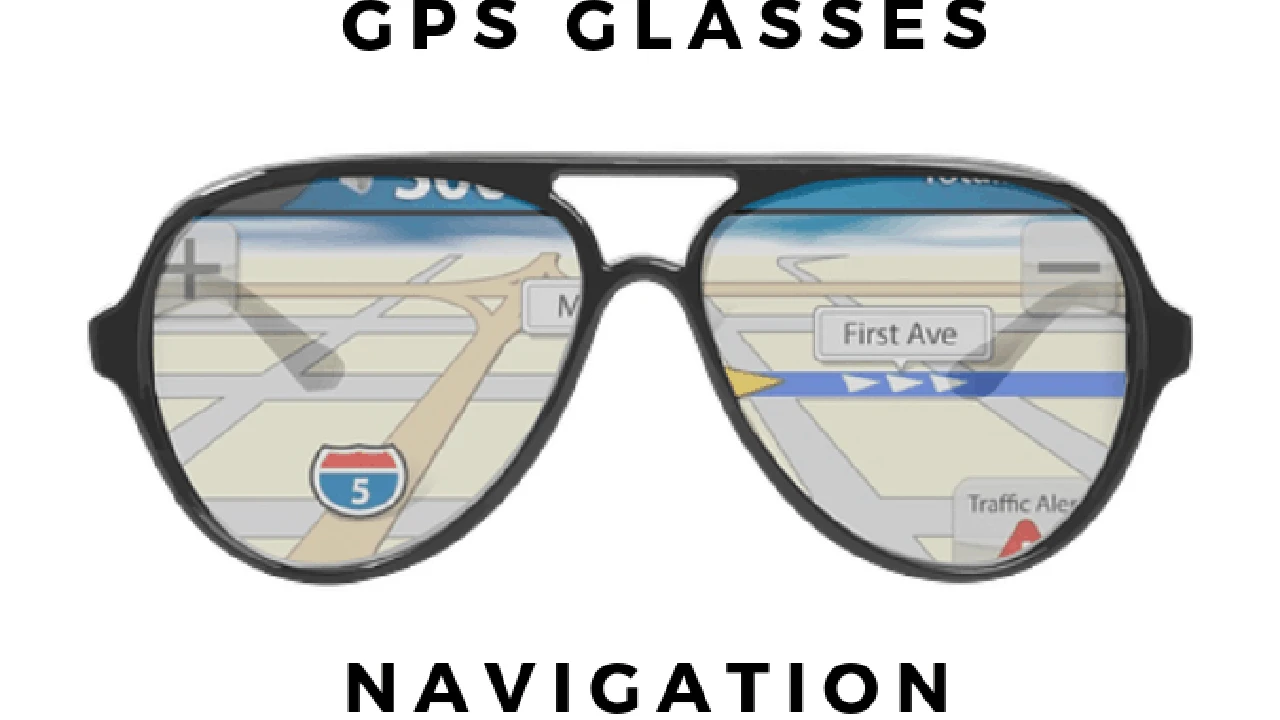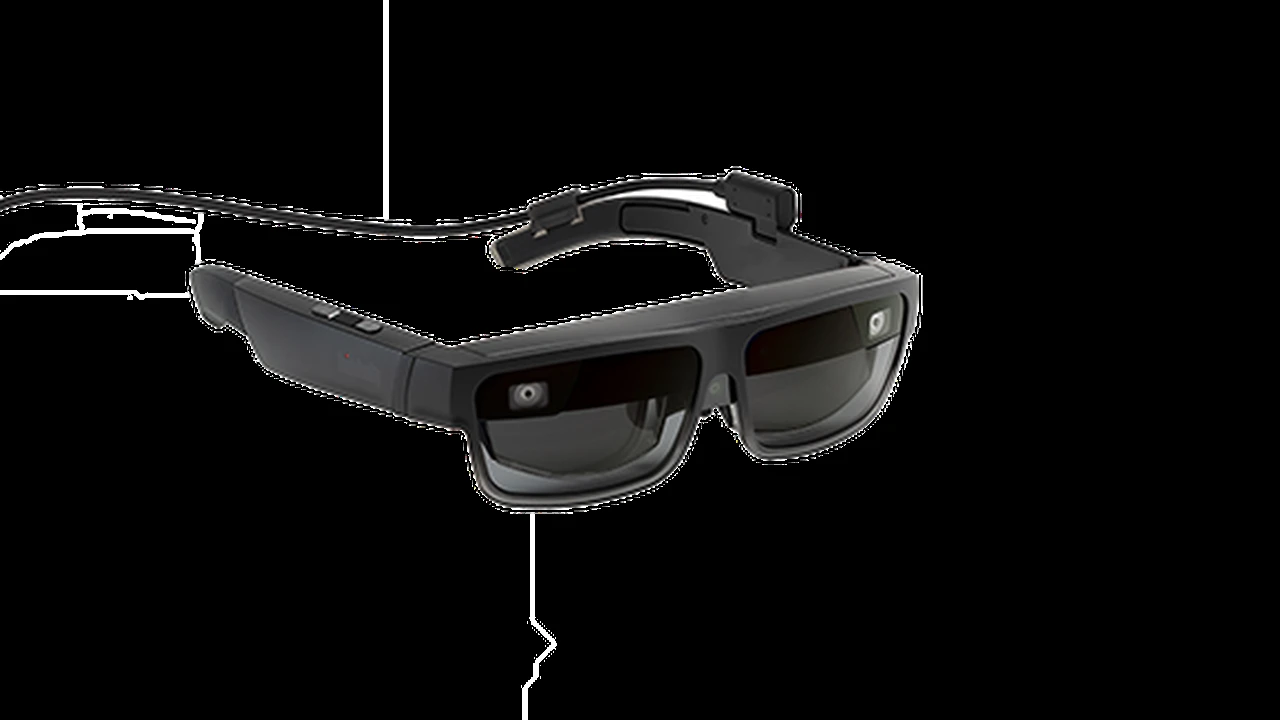Smart Glasses for Navigation and GPS A Hands-Free Guide
Navigate effortlessly with smart glasses, providing hands-free GPS and directional guidance.

Smart Glasses for Navigation and GPS A Hands-Free Guide
Smart glasses are rapidly evolving, moving beyond niche tech gadgets to become practical tools for everyday life. One of their most compelling applications is hands-free navigation. By projecting directions directly into your field of view, these devices eliminate the need to constantly glance down at a smartphone or car display. This not only keeps your eyes on the road or path, enhancing safety, but also allows you to stay more present in the moment, enjoying the journey rather than being distracted by a screen.
The Core Technology Behind Smart Glasses Navigation GPS Integration
At the heart of smart glasses navigation lies sophisticated GPS integration. Modern smart glasses typically incorporate a GPS module, similar to what you'd find in a smartphone. This module receives signals from satellites to pinpoint your exact location. But it's not just about location; it's about how that location data is processed and presented to you. Advanced smart glasses leverage augmented reality (AR) to overlay directional cues, points of interest, and even real-time traffic information directly onto your view of the real world. This creates an intuitive and highly effective navigation experience.
Beyond GPS, these devices often include other sensors like accelerometers, gyroscopes, and compasses. These sensors work in conjunction with GPS to provide more accurate positioning, especially in areas where GPS signals might be weak, such as urban canyons or indoors. Some smart glasses also utilize visual inertial odometry (VIO), which uses camera data to track your movement relative to your environment, further enhancing positional accuracy and stability of the AR overlays.
Key Benefits of Hands-Free Navigation with Smart Glasses Enhanced Safety and Convenience
The advantages of using smart glasses for navigation are numerous. First and foremost is safety. When driving, cycling, or even walking, looking down at a phone takes your eyes off your surroundings, increasing the risk of accidents. Smart glasses keep your eyes up, allowing you to process navigation information peripherally while maintaining full awareness of your environment. This 'eyes-up, hands-free' approach is a game-changer for personal safety.
Convenience is another major benefit. Imagine hiking a new trail; instead of fumbling with a map or phone, arrows appear on the path ahead, guiding you effortlessly. For cyclists, turn-by-turn directions can be displayed without breaking stride or losing focus on the road. In urban environments, points of interest, public transport information, and even restaurant ratings can pop up as you walk by, enriching your exploration without interrupting your flow.
Furthermore, smart glasses can offer a more natural and less intrusive navigation experience. The directions are integrated into your natural field of vision, making them feel less like a separate device and more like an extension of your own perception. This can reduce cognitive load and make navigating complex routes feel less stressful.
Top Smart Glasses for Navigation and GPS A Comparative Review
While the market for smart glasses is still maturing, several devices stand out for their navigation capabilities. Here's a look at some of the leading contenders, their features, typical use cases, and approximate pricing.
Nreal Air Smart Glasses Immersive Display for Navigation
The Nreal Air (now XREAL Air) are popular for their immersive display, offering a large virtual screen that can be used for various applications, including navigation. They connect to compatible smartphones via a cable, leveraging the phone's GPS and processing power. When used with navigation apps, they can project a large, clear map and turn-by-turn directions directly in front of you. While they don't offer true AR overlay onto the real world in the same way some industrial glasses do, the large virtual screen is highly effective for displaying detailed maps and directions.
- Use Cases: Pedestrian navigation, public transport navigation, co-pilot for car navigation (displaying phone's map).
- Key Features: Lightweight, comfortable, large virtual display (up to 201 inches at 6 meters), connects to Android and iOS devices (with adapter), good for media consumption alongside navigation.
- Pros: Excellent display quality, relatively affordable, versatile for other uses.
- Cons: Requires a wired connection to a phone, not true see-through AR for real-world overlay, limited standalone capabilities.
- Approximate Price: $379 - $459 USD
Ray-Ban Stories Smart Glasses Subtle Integration for Everyday Navigation
Ray-Ban Stories, developed in partnership with Meta, are designed for a more subtle, everyday integration. While their primary focus is on capturing photos and videos and playing audio, they do offer basic navigation cues through audio prompts and subtle visual indicators (e.g., a small LED light or a subtle sound cue for turns). They leverage your connected smartphone's GPS for location data. These are less about a full visual map overlay and more about discreet, audio-first guidance.
- Use Cases: Casual pedestrian navigation, cycling with audio cues, discreet guidance in urban environments.
- Key Features: Iconic Ray-Ban design, integrated cameras, open-ear audio, voice control, connects to Facebook View app.
- Pros: Stylish and discreet, comfortable for all-day wear, good audio quality.
- Cons: Limited visual navigation cues, primarily audio-based, no true AR display, battery life can be a concern with heavy use.
- Approximate Price: $299 - $329 USD
Vuzix Blade 2 Smart Glasses Enterprise-Grade AR Navigation
Vuzix has been a long-standing player in the smart glasses space, particularly for enterprise applications. The Vuzix Blade 2 offers a more robust AR experience, projecting information directly into your field of view. While often used for industrial applications like remote assistance, its AR capabilities make it suitable for more advanced navigation, especially in complex environments or for specific professional needs where precise visual overlays are crucial.
- Use Cases: Industrial navigation (e.g., warehouse routing), field service guidance, complex pedestrian routes, professional cycling.
- Key Features: See-through waveguide optics, integrated camera, voice control, Android OS, Wi-Fi and Bluetooth connectivity, rugged design.
- Pros: True AR overlay, standalone capability, durable build, good for professional use.
- Cons: Higher price point, design is more utilitarian than fashionable, battery life can vary with intensive AR use.
- Approximate Price: $1,299 - $1,499 USD
Google Glass Enterprise Edition 2 Specialized Industrial Navigation
Similar to Vuzix, Google Glass Enterprise Edition 2 is primarily aimed at industrial and professional use cases. It offers a small, discreet display that projects information just above your right eye. While not designed for consumer navigation in the same way a phone app is, it can be programmed for specific navigation tasks within a factory, warehouse, or for field technicians. Its strength lies in providing contextual information and step-by-step instructions in a hands-free manner.
- Use Cases: Indoor navigation for large facilities, guided assembly, maintenance routes, specific professional navigation tasks.
- Key Features: Lightweight, comfortable for extended wear, integrated camera, voice commands, Android OS, Wi-Fi and Bluetooth.
- Pros: Highly customizable for specific applications, robust for industrial environments, discreet display.
- Cons: Not a consumer product, high price, limited general consumer navigation apps, display is small.
- Approximate Price: $999 - $1,299 USD (often sold through enterprise solutions providers)
Future and Emerging Smart Glasses for Navigation The Horizon
The landscape of smart glasses is constantly evolving. Companies like Apple, Meta (with their more advanced AR glasses), and others are heavily investing in this space. We can expect future generations of smart glasses to offer even more seamless and sophisticated navigation experiences. This includes:
- Full-Color AR Overlays: More vibrant and detailed directional cues directly on the real world.
- Improved SLAM (Simultaneous Localization and Mapping): Better understanding of the environment for more accurate indoor and outdoor positioning without relying solely on GPS.
- Contextual Awareness: Glasses that can understand your intent and provide proactive navigation suggestions (e.g., suggesting a shortcut based on your walking speed).
- Integration with Smart City Infrastructure: Seamless navigation that incorporates real-time public transport updates, smart traffic signals, and more.
- Longer Battery Life: Crucial for all-day navigation use.
- More Fashionable Designs: Making smart glasses indistinguishable from regular eyewear.
Choosing the Right Smart Glasses for Your Navigation Needs Factors to Consider
When selecting smart glasses for navigation, several factors should influence your decision:
- Primary Use Case: Are you looking for casual pedestrian guidance, cycling directions, or professional industrial navigation? This will heavily dictate the type of smart glasses you need.
- Display Type: Do you prefer a large virtual screen (like Nreal Air) or a subtle AR overlay (like Vuzix Blade 2)? Some might prefer audio-only cues (like Ray-Ban Stories).
- Connectivity: Do you need standalone capabilities, or are you comfortable with a wired or wireless connection to your smartphone?
- Battery Life: How long do you need the navigation to last? Consider the typical duration of your journeys.
- Comfort and Design: Will you be wearing them for extended periods? Comfort and how they look are important, especially for everyday use.
- Durability: If you're using them for outdoor activities or in demanding environments, a rugged design might be necessary.
- Price: Smart glasses range from a few hundred to several thousand dollars. Set a budget based on your needs and desired features.
- Ecosystem and App Support: Check what navigation apps are compatible with the smart glasses or if there's an open SDK for developers to create custom solutions.
Setting Up and Using Smart Glasses for Navigation A Quick Start Guide
Getting started with smart glasses for navigation is generally straightforward, though it varies by model:
- Charge Your Device: Ensure your smart glasses are fully charged before use.
- Pair with Your Smartphone (if applicable): Most consumer-oriented smart glasses require pairing with a smartphone via Bluetooth or a wired connection. Follow the manufacturer's instructions for initial setup.
- Install Necessary Apps: Download the companion app for your smart glasses (e.g., XREAL Nebula for Nreal Air, Facebook View for Ray-Ban Stories). You'll also need a compatible navigation app. Some smart glasses have built-in navigation, while others integrate with popular apps like Google Maps or Apple Maps.
- Calibrate (if needed): Some AR smart glasses might require a quick calibration to ensure the display aligns correctly with your vision.
- Input Your Destination: Use voice commands, your smartphone, or a touch interface on the glasses to input your desired destination.
- Start Navigating: Follow the visual cues (arrows, maps, points of interest) and/or audio prompts provided by the smart glasses.
- Adjust Settings: Experiment with brightness, volume, and display preferences to optimize your navigation experience.
The Impact of Smart Glasses on Daily Commutes and Outdoor Activities A Transformative Experience
The integration of smart glasses into daily commutes and outdoor activities is truly transformative. For commuters, it means less stress navigating unfamiliar routes, especially in busy urban centers. Cyclists can maintain their focus on the road and traffic, receiving turn-by-turn directions without having to look down at a handlebar-mounted phone. Hikers can explore new trails with confidence, knowing they have a reliable guide projected directly onto their path.
Beyond mere directions, smart glasses can enrich the experience. Imagine walking through a historical district, and as you approach a landmark, a small information bubble appears, providing details about its history. Or cycling past a scenic viewpoint, and the glasses highlight the best spot for a photo. This contextual awareness, powered by location data and AR, turns navigation into an interactive and informative journey.
For professionals, the impact is even more profound. Field technicians can receive step-by-step repair instructions overlaid on the equipment they're working on. Warehouse workers can be guided efficiently to specific inventory locations. This hands-free access to critical information significantly boosts productivity and reduces errors.
Privacy and Data Security Considerations for Smart Glasses Navigation User Awareness
As with any connected device, privacy and data security are crucial considerations when using smart glasses for navigation. These devices collect location data, and some may also capture visual information about your surroundings. It's important to be aware of:
- Data Collection Policies: Understand what data the smart glasses manufacturer and associated app providers collect, how it's used, and with whom it's shared.
- Location Tracking: Be mindful that your movements are being tracked. Ensure you're comfortable with the level of location data being recorded.
- Camera Use: If your smart glasses have a camera, be aware of when it's active and what it's recording, especially in public spaces. Most consumer smart glasses have clear indicators when recording.
- Security Updates: Ensure your smart glasses and their companion apps receive regular security updates to protect against vulnerabilities.
- Permissions: Review and manage the permissions granted to navigation apps and the smart glasses themselves on your smartphone.
Always read the privacy policy of the device and any apps you use. Opt for devices from reputable manufacturers that prioritize user privacy and offer transparent data handling practices. Being informed allows you to make choices that align with your comfort level regarding data sharing.
The Future of Hands-Free Navigation with Smart Glasses Seamless Integration and Advanced Features
The future of hands-free navigation with smart glasses is incredibly promising. We're moving towards a future where smart glasses are not just displaying directions but are intelligently anticipating our needs and providing contextual information seamlessly. Imagine:
- Proactive Navigation: Your glasses suggest the best route to your next appointment based on real-time traffic and your calendar.
- Dynamic POI Discovery: As you walk, points of interest, reviews, and historical facts appear dynamically, tailored to your interests.
- Multi-Modal Navigation: Seamless transitions between walking, cycling, public transport, and driving modes, with optimized directions for each.
- Indoor Navigation: Precise guidance within large buildings like airports, malls, or museums, where GPS is often unreliable.
- Social Navigation: See where friends are on a map overlay or get directions to meet them in a crowded place.
- Enhanced Accessibility: Advanced navigation features for individuals with visual impairments, providing audio and haptic cues for obstacles and directions.
As smart glasses become more powerful, compact, and integrated into our daily lives, hands-free navigation will evolve from a novel feature to an indispensable tool, making our journeys safer, more efficient, and infinitely more engaging. The days of fumbling with maps or staring at a phone screen for directions are slowly but surely becoming a thing of the past, replaced by an intuitive, heads-up experience that keeps us connected to the world around us while guiding us effortlessly to our destination.
:max_bytes(150000):strip_icc()/277019-baked-pork-chops-with-cream-of-mushroom-soup-DDMFS-beauty-4x3-BG-7505-5762b731cf30447d9cbbbbbf387beafa.jpg)





